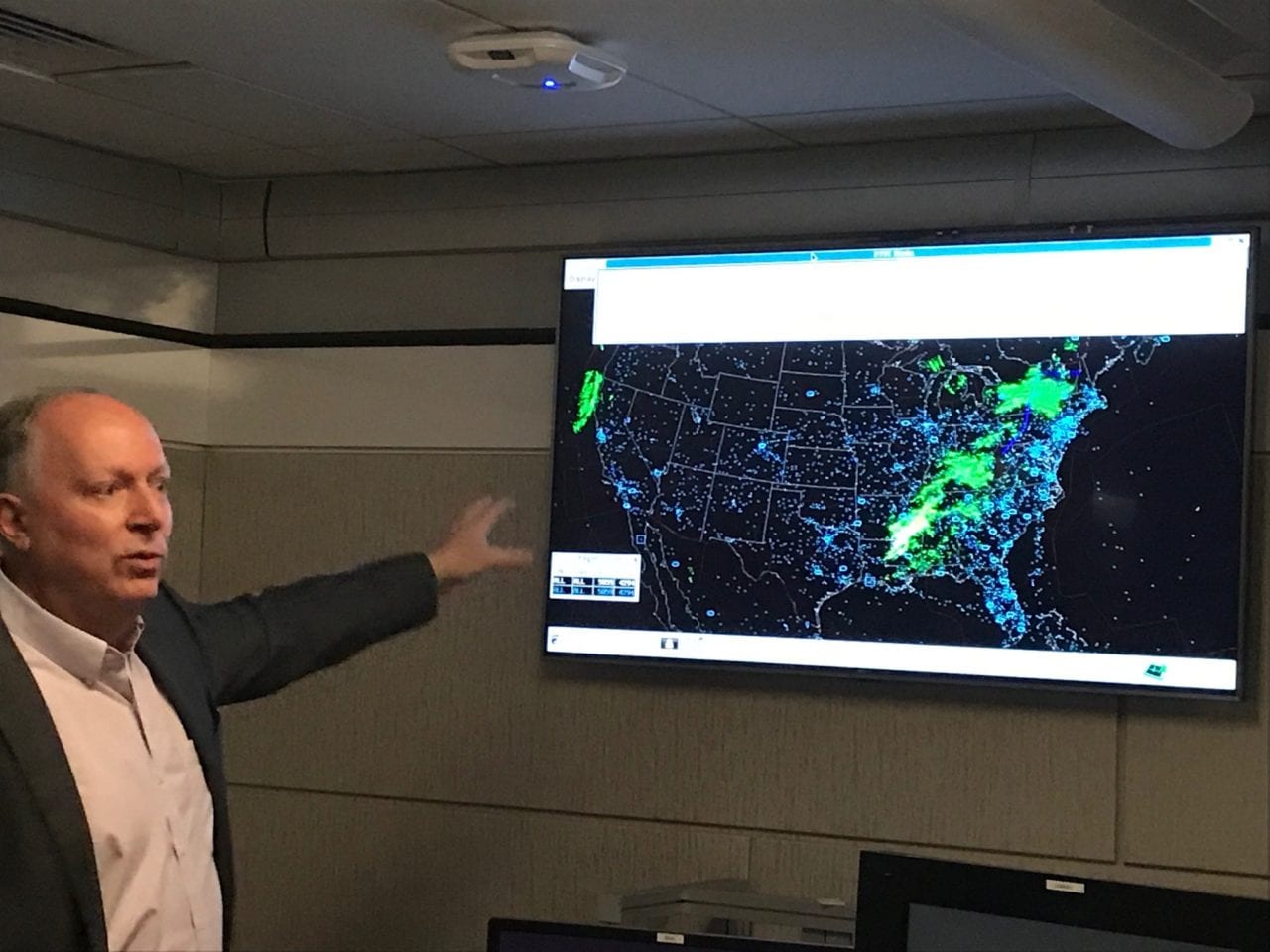
Gregg Leone, vice president and director of the Mitre Center for Advanced Aviation System Development (CAASD), discusses the features of the Mitre IDEA Lab, which may help define the requirements for beyond NextGen technologies (Avionics International Photo)
Since 1992, MITRE’s Integrated Demonstration and Experimentation for Aeronautics (IDEA) Lab in McLean, Va. has worked to test the impact of new technologies for the Federal Aviation Administration, better manage air traffic, integrate unmanned aircraft systems into the national airspace system (NAS), and define emerging aviation requirements. Now, the IDEA Lab is taking on a new challenge, that of helping to build consensus among the FAA and other aviation stakeholders on what the NAS will resemble in 2035 after the FAA’s NextGen airspace system modernization program achieves full implementation around 2025.
In the late 1990s and early 2000s, before NextGen, airlines suffered billions in losses, and flight delays were routine. NextGen has helped airline and air traffic efficiency, according to MITRE.
“The peak of the money coming into the FAA to build NextGen was around 2010, developing requirements, doing research and development, and pushing out contracts to industry,” Gregg Leone, vice president and director of the Mitre Center for Advanced Aviation System Development (CAASD), told reporters recently during a visit to the IDEA Lab. “Now, how do you leverage it?”
Beyond 2025 will involve leveraging NextGen to improve service delivery, expand equipage, implement advanced applications for NextGen systems, and easily integrate new capabilities for the NAS, MITRE said.
MITRE has come up with a number of principles for the 2035 environment, including the provision of NAS services from surface to space and back, the responsibility of existing and new entrants to the NAS–such as urban air mobility firms–to provide safe and secure operations along with the constant evolution of services and systems according to need and the universal sharing of airspace information in order to provide services.
A number of factors will play into such a future NAS, including new business models and stakeholders, an evolving federal regulatory environment, expanded autonomy in aircraft operations, continuous and ubiquitous data exchange, and an increased use of artificial intelligence for air traffic management, according to MITRE. In such an environment, air vehicles will become nodes in the airspace and will be able to push and pull information as needed, equivalent to the way humans on the ground now use their smart phones.
In so-called “performance-based airspace,” users will not be limited to a single app or service, and collaboration will exist among diverse traffic management services. For example, a drone operating near an airport could easily transition from unmanned traffic management to air traffic management under such a concept.
With the likely new entrants to the NAS, including drones and air taxis, air traffic controllers’ jobs will become significantly more complex.
Whatever program emerges after NextGen will have to be a national priority, according to MITRE.
“NextGen was not built to all the business cases that have surfaced in the last 10 years,” said Dennis Sawyer, MITRE’s director of air traffic management innovation.